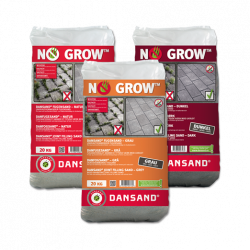 Abstract: The recent phaseout of herbicide use on public pavements in Flanders has triggered the development of alternative weed control strategies. Besides the search for effective non-chemical curative methods, there is also a need for strategies that prevent or reduce weed growth on pavements. In this study a paving experiment was set up under a rain shelter to investigate the effects of four construction factors on weed growth: joint filling material, joint width, organic pollution of the joint filling material and type of bedding layer. Paving mini-plots were oversown with a mixture of dominant, hard-to-control weed species found on pavements. The inhibitory effect on weeds was determined by examining initial weed density and weed coverage over a 2-year period. More weed growth was found in pavings with wide joints and organically polluted joint filling materials. High permeability of the bedding layer resulted in higher weed cover. The coarse-grained filling materials and the sodium silicate-enriched sand Dansand® were associated with less weed cover than the fine-grained filling materials. Our results show there is potential for preventing weed growth using suitable paving materials and appropriate high-standard construction and maintenance of pavements. [De Cauwer B, Fagot M, Beeldens A, Boonen E, Bulcke R & Reheul D (2013). Reduced weed growth with different paving constructions. Weed Research, online 20 Nov] ${imageDescription} Comment
Abstract: The recent phaseout of herbicide use on public pavements in Flanders has triggered the development of alternative weed control strategies. Besides the search for effective non-chemical curative methods, there is also a need for strategies that prevent or reduce weed growth on pavements. In this study a paving experiment was set up under a rain shelter to investigate the effects of four construction factors on weed growth: joint filling material, joint width, organic pollution of the joint filling material and type of bedding layer. Paving mini-plots were oversown with a mixture of dominant, hard-to-control weed species found on pavements. The inhibitory effect on weeds was determined by examining initial weed density and weed coverage over a 2-year period. More weed growth was found in pavings with wide joints and organically polluted joint filling materials. High permeability of the bedding layer resulted in higher weed cover. The coarse-grained filling materials and the sodium silicate-enriched sand Dansand® were associated with less weed cover than the fine-grained filling materials. Our results show there is potential for preventing weed growth using suitable paving materials and appropriate high-standard construction and maintenance of pavements. [De Cauwer B, Fagot M, Beeldens A, Boonen E, Bulcke R & Reheul D (2013). Reduced weed growth with different paving constructions. Weed Research, online 20 Nov] ${imageDescription} Comment